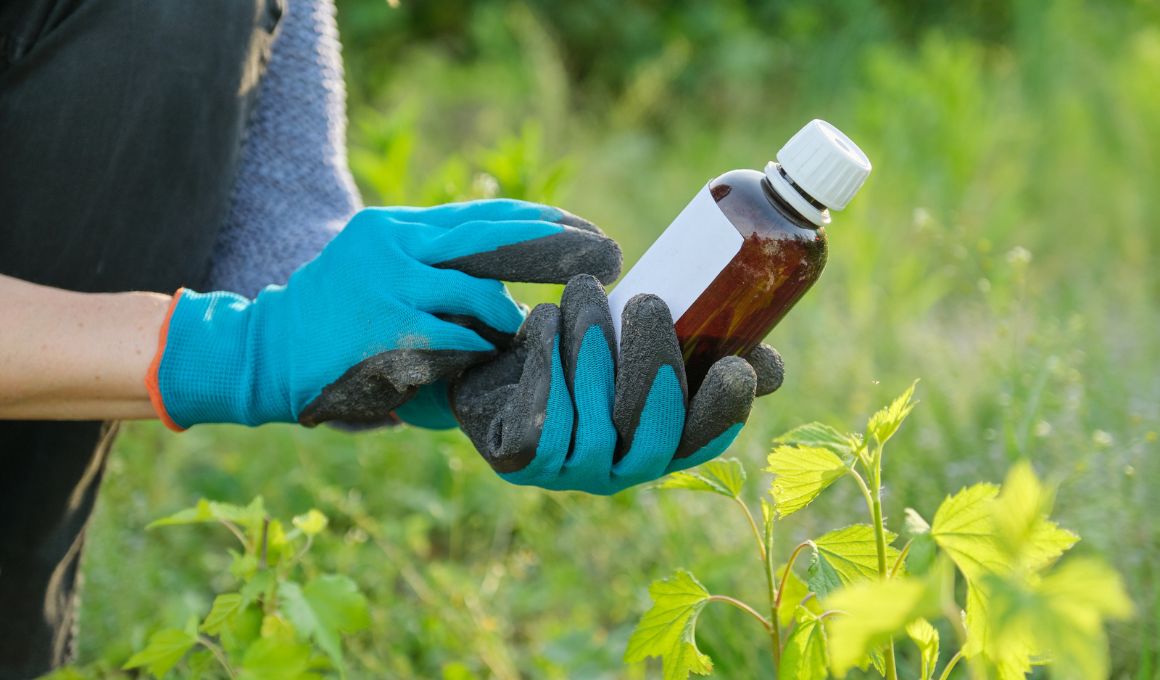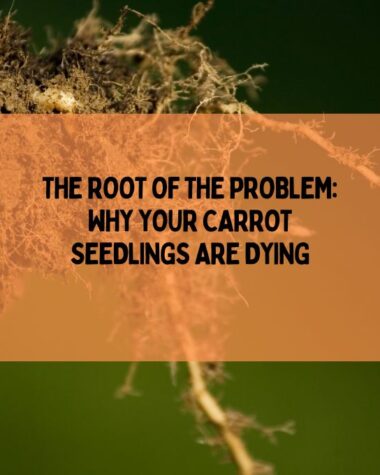Cercospora Leaf Blight is a fungal disease that affects carrots, leading to significant carrot production losses and reduced product quality. It is caused by the fungus Cercospora carotae and is a common problem in carrot cultivation worldwide.
In this article, I will discuss the causes, symptoms, diagnosis, prevention, and management of Cercospora Leaf Blight in carrots. By the end of this article, you will have a comprehensive understanding of the disease and the tools to recognize and manage it effectively in their carrot crops.
Understanding Cercospora Leaf Blight in Carrots

Cercospora Leaf Blight is a fungal disease caused by the fungus Cercospora carotae. The fungus is commonly found in soil, plant debris, and infected seeds. It can also be transmitted through wind, water, and contaminated farm equipment.
Warm and humid conditions favor the disease and can infect carrot crops at any growth stage.
Symptoms of Cercospora Leaf Blight include small, circular, brown, or gray lesions on the leaves. As the disease progresses, the spots merge, and the affected leaves become yellow and dry out. In severe cases, the entire leaf may wilt and die. The disease can also cause black or brown streaks on the roots, making them unmarketable.
Cercospora Leaf Blight can be mistaken for other diseases like Alternaria Leaf Blight and Septoria Leaf Blight, which have similar symptoms. However, a few distinguishing characteristics can help differentiate between them.
Cercospora Leaf Blight lesions are smaller and more circular than Alternaria Leaf Blight lesions, which are irregularly shaped. Additionally, Septoria Leaf Blight lesions have distinct black dots in the center, absent in Cercospora Leaf Blight lesions.
To prevent the spread of Cercospora Leaf Blight, it is essential to identify the disease accurately and take appropriate measures. A timely diagnosis can prevent the disease from spreading to other plants and fields, reducing the risk of yield losses. The following section will discuss the diagnosis process for Cercospora Leaf Blight in carrots.
Diagnosis of Cercospora Leaf Blight

Accurate diagnosis of Cercospora Leaf Blight is crucial to prevent its spread and manage the disease effectively. The following are the steps to diagnose the disease in carrots:
- Visual inspection: Look for circular brown or gray spots on the leaves, which are the primary symptoms of Cercospora Leaf Blight. Check the underside of the leaves for the presence of dark fungal spores.
- Laboratory analysis: Collect leaf samples from the affected plants and send them to a plant pathology laboratory. The laboratory will conduct various tests, including microscopic examination and DNA analysis, to confirm the presence of Cercospora carotae.
- Field testing: In some cases, field tests can be used to diagnose the disease quickly. The tests involve spraying a specific chemical on the plant and observing the reaction. The plant is diagnosed as Cercospora Leaf Blight if it shows a particular reaction.
Accurate diagnosis of Cercospora Leaf Blight is crucial to take appropriate measures to manage the disease effectively. Misdiagnosis or delay in diagnosis can lead to the spread of the disease, causing significant yield losses.
Therefore, in the next section, professionals help diagnose the disease accurately at the earliest. The following section will discuss the prevention and management strategies for Cercospora Leaf Blight in carrots.
Related Read
- The Ultimate Guide To Cucumber Pests and Diseases
- How to Find, Prevent, and Treat Zucchini Plant Problems?
- 10 Tomato Diseases – How to Recognize, Treat, and Prevent?
Prevention of Cercospora Leaf Blight
Prevention is the most effective way to manage Cercospora Leaf Blight in carrots. By implementing the following practices, growers can minimize the risk of infection and reduce the impact of the disease:
- Crop rotation: Cercospora carotae can survive in the soil and infect the subsequent carrot crops. Therefore, it is essential to rotate the crops to reduce the pathogen’s buildup in the soil. A crop rotation of at least two to three years is recommended.
- Sanitation: Infected plant debris can serve as a source of inoculum for Cercospora Leaf Blight. Therefore, removing and destroying the infected plant debris and avoiding planting carrots in fields with a history of the disease is essential. Farm equipment should also be sanitized to prevent the spread of the disease between fields.
- Fungicides: Fungicides can be used as a preventive measure to reduce the risk of infection. However, they should be combined with cultural practices, not as a standalone measure. Fungicides should be applied early in the season before the disease appears and should be reapplied as per the label instructions.
- Resistant varieties: Some carrot varieties are resistant to Cercospora Leaf Blight. Growers can choose these varieties to reduce the risk of infection. However, it is essential to note that resistance does not guarantee complete immunity, and other prevention measures should still be implemented.
- Irrigation management: Overhead irrigation can create a favorable environment for Cercospora Leaf Blight. Therefore, drip or furrow irrigation should be used instead of overhead irrigation to reduce leaf wetness.
- Nutrient management: Proper nutrient management can improve plant health and reduce the risk of infection. Adequate nitrogen and potassium levels can improve plant vigor and help plants withstand the disease.
Proper prevention techniques can significantly reduce the impact of Cercospora Leaf Blight on carrots. Implementing these practices can also reduce the dependence on fungicides, which can lead to the development of resistant strains of the pathogen.
In the next section, we will discuss the management strategies for Cercospora Leaf Blight in carrots.
Also, Read
- Understanding Deformed Carrots And How To Fix Them
- Carrot Black Root Rot: Symptoms, Causes, and Prevention Methods
- Carrots For Butterflies: How To Attract Black Swallowtails To Your Garden?
Management of Cercospora Leaf Blight

Management of Cercospora Leaf Blight in carrots involves both preventive and curative measures. The following are some strategies to manage the disease:
- Fungicides: Fungicides can be used to manage Cercospora Leaf Blight in carrots. However, they should be used judiciously, following label instructions and with other management practices.
- Biological control: Biological control agents like Trichoderma spp. and Bacillus subtilis can be used to manage Cercospora Leaf Blight. These agents work by competing with the pathogen for resources and suppressing its growth.
- Foliar nutrient sprays: Foliar nutrient sprays can improve plant health and reduce the severity of the disease. Spraying potassium and calcium can improve plant vigor and reduce the impact of the disease.
- Cultural practices: Cultural practices like crop rotation, field sanitation, and irrigation management can also be used as management strategies for Cercospora Leaf Blight. These practices can reduce the inoculum load and create an unfavorable environment for the pathogen.
- Rogueing: Infected plants should be removed and destroyed to prevent the spread of the disease. This practice is known as roguing and can significantly reduce the disease’s severity.
In conclusion, Cercospora Leaf Blight is a significant disease that can cause significant yield losses and reduce the quality of carrots.
Accurate diagnosis and timely implementation of prevention and management strategies can help growers manage the disease effectively by implementing cultural practices and fungicides.
Take Away
Cercospora Leaf Blight is a significant disease that can cause severe damage to carrot crops. Accurate diagnosis and timely implementation of prevention and management strategies are critical to managing the disease effectively. This article discusses the causes, symptoms, diagnosis, prevention, and management of Cercospora Leaf Blight in carrots.
Key takeaways:
- Cercospora Leaf Blight is caused by the fungus Cercospora carotae and can cause significant yield losses and reduce the quality of carrots.
- The common symptoms of Cercospora Leaf Blight include small purple or brown spots on the leaves, which can merge and cause defoliation.
- Accurate diagnosis is essential to manage the disease effectively, and it can be done by observing the symptoms and conducting laboratory tests.
- Prevention is the most effective way to manage Cercospora Leaf Blight, and it can be done by implementing cultural practices, crop rotation, field sanitation, and irrigation management.
- Management strategies include using fungicides, biological control agents, foliar nutrient sprays, cultural practices, and roguing.
In conclusion, recognizing and managing Cercospora Leaf Blight in carrots is crucial for maintaining the quality and yield of the crop. By implementing preventive and management strategies, growers can minimize the impact of the disease and improve their overall profitability.
Happy Gardening!







